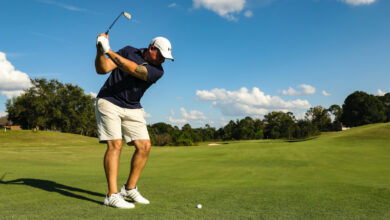Golf is a beautiful game, but it can sometimes feel like you’re wrestling with a wild animal, especially when it comes to your grip. Many amateur golfers don’t realise just how fundamental a good grip is to their overall game. If you’re struggling to make consistent contact with the ball, it might be time to take a closer look at how you’re holding the club. Let’s explore the basics of a solid grip and how it can help you control your shots better.
The Importance of a Good Grip
Your grip is the only connection you have to the club. It’s the bridge between you and the ball. A good grip enables better control, which can translate into more accurate shots. If you think of your grip as the foundation of your swing, it’s easier to understand why it’s worth spending some time getting it right.
Finding the Right Grip Style
There are three main grip styles: the overlapping grip, the interlocking grip, and the ten-finger grip. Don’t worry; you don’t need to choose one right away. It might take you a while to figure out which one feels the most comfortable.
-
Overlapping Grip: This is where the little finger of your trailing hand rests on top of the index finger of your leading hand. It’s a popular choice among many golfers, as it offers a good blend of control and comfort.
-
Interlocking Grip: For this grip, the little finger of your trailing hand intertwines with the index finger of your leading hand. This grip is great for players with smaller hands, as it helps keep the hands together throughout the swing.
-
Ten-Finger Grip: Also known as the baseball grip, all ten fingers hold the club. This style is often preferred by beginners or those who prefer a less complicated method. It gives a solid feel but may limit control compared to the other methods.
Finding Your Comfort Zone
Once you’ve decided on a grip style, the next step is to find a comfortable grip pressure. You want to hold the club firm enough to maintain control but not so tightly that your hands tense up. A good rule of thumb is to make the grip firm enough that it feels secure but light enough that you could hold a tube of toothpaste without squeezing it too hard.
Hand Position Matters
The way your hands are positioned on the club also plays a role in your shot. Your leading hand (the left hand for right-handed golfers) should rest on the club so that the thumb is on top. The trailing hand should wrap around so that your palms face each other. Check to ensure that your leading hand is not turned too much to the left or right, as this can lead to inconsistent shots.
Practice, Practice, Practice
Like any skill in golf, getting your grip right takes time and practice. Go to the driving range and focus on your grip during your warm-up. Try hitting a few shots while being mindful of how you’re holding the club. Notice how different grips change your shots. You might be surprised at how a small adjustment can lead to big results.
Winding Up
In summary, your grip plays a critical role in your golf game. Experiment with different grip styles to see what feels best for you, and pay attention to how tightly you’re holding the club. Don’t be afraid to practice at the range, as that’s where you can develop a natural feel for your grip—without the pressure of the course.
As you work on your grip, remember to be patient with yourself. Every golfer has their unique style and preferences. Keeping things relaxed and fun will help you enjoy the learning process even more. Soon enough, you’ll find that understanding your grip can open the door to greater control and better scores. Happy golfing!



